Q. What led to the A-bomb attacks on Hiroshima and Nagasaki?
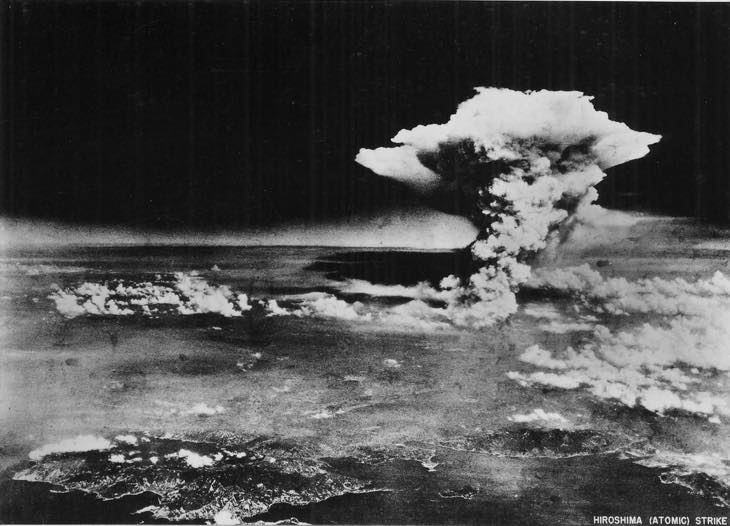
Nuclear weapons are the worst weapons of mass destruction in human history. The atomic bomb was first developed by the United States, and the cities of Hiroshima and Nagasaki became targets of this new weapon.
The United States began developing the atomic bomb as a national project in 1939. A massive sum of money went toward this goal and two types of atomic bombs, with tremendous destructive power, were produced: one was a uranium bomb and the other was a plutonium bomb. While they were still under development, the United States made plans to use these bombs against Japan. At the time, these two nations were at war.
Toward the end of the war, the U.S. military repeatedly carried out air strikes on major cities in Japan. These attacks burned down densely populated areas and killed scores of civilians, including children. These air strikes escalated into the Great Tokyo Air Raids of March 10, 1945, in which about 100,000 people lost their lives.
At the same time, the United States was preparing to pursue attacks with atomic bombs, believing this could bring the war to an end. Another motive for their use, however, is thought to be the U.S. desire to gain a stronger position relative to the Soviet Union after the war.
The cities of Hiroshima, Kokura (today, Kitakyushu), Niigata, and Nagasaki became the targets for the atomic bombs. Among these cities, Hiroshima was picked as the primary target for the uranium bomb. After the Meiji era (1868-1912), Hiroshima grew to become an important military city and sent many soldiers off to fight wars that included the Sino-Japanese War (1894-95) and the Russo-Japanese War (1904-05).
The United States had refrained from carrying out air strikes on Hiroshima because it is believed that its aim included accurately evaluating the effects of the atomic bomb.
On the morning of August 6, 1945, the sky above Hiroshima was bright and clear. At 8:15 a.m., the American bomber dubbed “Enola Gay” dropped the atomic bomb nicknamed “Little Boy” on the city center, targeting the T-shaped Aioi Bridge. It was the first-ever nuclear attack on human beings. The bomb exploded about 600 meters in the air over today’s Shima Internal Medicine Hospital (then Shima Surgical Hospital), located near the A-bomb Dome.
On August 9, three days after the atomic bombing of Hiroshima, the United States dropped a plutonium bomb, nicknamed “Fat Man,” on the city of Nagasaki. In fact, Kokura had been the primary target that day, but because of poor visibility above Kokura, the bomber headed toward the second target on its list, Nagasaki. At 11:02 a.m., the bomb was dropped on the Urakami district, located on the north side of downtown Nagasaki.
Q. What sort of damage did the atomic bombings cause?
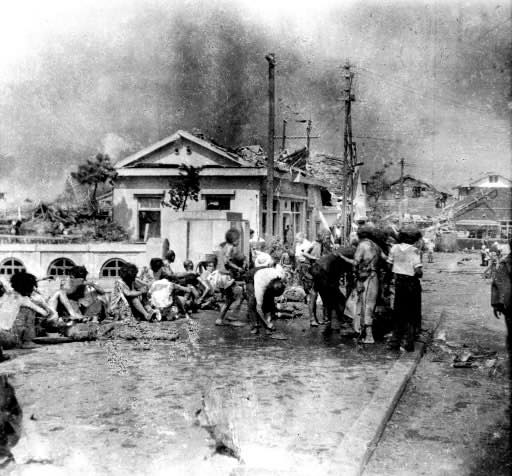
The atomic bomb was characterized by its intense heat rays, massive blast, and the enormous amount of radiation that the blast released. In Hiroshima, the temperature at the ground of the hypocenter reached 3,000 to 4,000 degrees Celsius. Nearly everything within two kilometers of the hypocenter was decimated by the blast and heat rays.
Many residents of the city suffered severe burns from head to toe. Those who were exposed to the bomb’s radiation experienced such symptoms as vomiting and hair loss, and many of them died suddenly from their radiation sickness. Before the bombing, there were about 350,000 civilians and soldiers in Hiroshima. By the end of 1945, the official estimate is that about 140,000 (±10,000) people had died. Even after that, the loss of life continued as more fell victim to their burns or A-bomb-related diseases, like leukemia.
Another significant fact is that many young teens perished in the atomic bombing. Thousands of students from junior high schools and girls’ high schools had been mobilized to work at munitions factories or at demolition sites where homes were being torn down to create fire breaks in the event of air raids. Most of them lost their lives that fateful day.
Meanwhile, Nagasaki had a population of about 240,000 at the time. According to an estimate issued by a city commission, 73,884 people had died by the end of 1945. The commission was formed to study and preserve materials related to the atomic bombing and it released this death toll five years later, a figure that has been used since that time.
Those who were exposed to the radiation from these bombs have continued to suffer since the war ended. In Hiroshima and Nagasaki, it is known that the survivors have a slightly higher risk of developing such conditions as cataracts or cancer even decades later. However, the effects of low-level radiation exposure are still uncertain.
Q. How did Hiroshima recover from this devastation?
Urban functions were lost in the devastated city and it was extremely difficult to rescue the survivors and provide them with proper medical treatment. Under such conditions, many survivors made efforts to restore and reconstruct the city despite the injuries they had suffered.
One anecdote that symbolizes this state of affairs concerns the “first streetcar” after the bombing, operated by the Hiroshima Electric Railway Company. Of the entire fleet of 123 streetcars in the city, 108 were damaged, along with the railway tracks. However, only three days later, the “first streetcar” ran between Koi and Nishitenma, a distance of 1.2 kilometers. Teenage girls at the Hiroshima Electric Girls’ School, who worked as train operators and conductors during the war and were able to survive the bombing, played a major part in resuming operations.
The Chugoku Shimbun lost 114 employees, or one-third of its workforce, as a result of the atomic bombing. Despite this catastrophic damage, the newspaper company made an all-out effort to resume publishing in the city that sought to rise again from the ashes of the A-bomb attack.
Support from overseas was also vital. Dr. Marcel Juno, a medical doctor from Switzerland and then the head of the Japan delegation of the International Committee of the Red Cross, delivered medical supplies to the stricken city. He himself came to Hiroshima about one month after the atomic bombing and treated survivors at an aid station. Floyd Schmoe was an American who came to Hiroshima to build houses for the survivors who had lost their homes. The homes built by Mr. Schomoe were called “Schmoe Houses.”
In 1949, the Hiroshima Peace Memorial City Reconstruction Law was enacted after receiving support from the people of Hiroshima in a local referendum. Based on this law, various reconstruction efforts were then pursued. One of these efforts was the construction of the Peace Memorial Park, designed by the architect Kenzo Tange. In the park, the Cenotaph for the A-bomb Victims was completed in 1952, and the Hiroshima Peace Memorial Museum opened in 1955 for the purpose of conveying, to those in and out of Japan, the catastrophic conditions that befell Hiroshima as a result of the atomic bombing
Q. Were Japanese people the only victims of the atomic bombing?
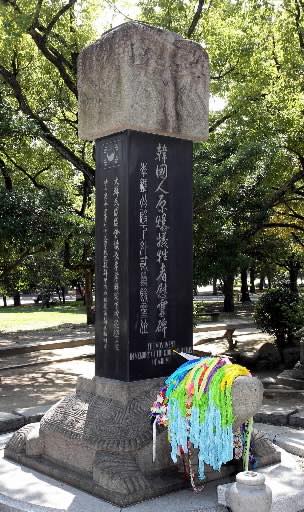
The victims of the Hiroshima A-bombing included people from a number of other nations. Back then, Korea was under Japanese colonial rule, and some Korean nationals were brought to Hiroshima and Nagasaki to become forced laborers in Japan. In the Peace Memorial Park stands the Monument in Memory of the Korean Victims of the Atomic Bomb.
Students from Southeast Asian countries, in Hiroshima to study at the Hiroshima University of Literature and Science (now Hiroshima University), also became victims of the A-bomb attack. In addition, there were Chinese laborers who were being detained in Hiroshima at the time. They had been forcibly brought to Hiroshima to engage in constructing the Yasuno Power Plant, located in present-day Akiota-cho, Hiroshima.
The American soldiers who died in the atomic bombing must also not be forgotten. They were being held in Hiroshima as prisoners of war (POWs) after their planes were shot down in the area. There were children of Japanese emigrants as well, who had gone to the United States before the war. They were in Hiroshima to be educated in the country where their parents were born.
Such history should be taken into account when considering the relief measures made for A-bomb survivors living abroad, as they were often overlooked after the war. According to the Health, Labour and Welfare Ministry, the number of holders of the Atomic Bomb Survivor’s Certificate living overseas, as of the end of March 2022, was 2,658 in 30 countries and regions. Although relief measures for the survivors are improving, challenges still remain.
Q. Is there a rising trend in the number of international visitors to Hiroshima?
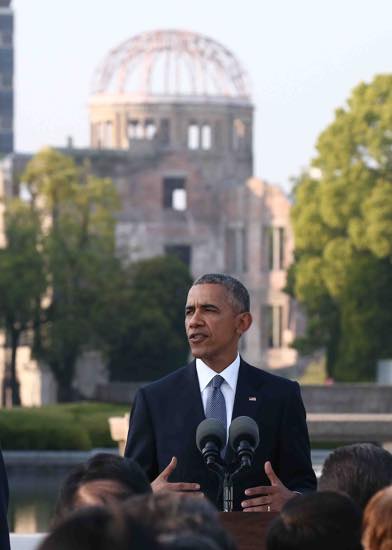
There has been a growing number of international visitors to the Peace Memorial Park in Hiroshima. The city continuously welcomes the visits of politicians, government officials, and public figures from various nations. On May 27, 2016, then U.S. President Barack Obama visited the Peace Memorial Park and met briefly with A-bomb survivors. It was the first-ever visit to Hiroshima since the atomic bombing by a sitting president of the country that carried out the attack. In his speech in front of the Cenotaph for the A-bomb Victims, Mr. Obama said: “…among those nations like my own that hold nuclear stockpiles, we must have the courage to…pursue a world without them.”
Other influential world figures have also come to Hiroshima. In 1981, Pope John Paul II visited the Peace Memorial Park and read out the Appeal for Peace, in which he said, “War is the work of man. War is destruction of human life.” His appeal was well received around the world.
Hiroshima and Nagasaki regularly appeal to world leaders to visit the A-bombed cities. It is vital that the leaders of the nuclear weapon states, with policymaking influence, learn about the catastrophic consequences of the atomic bombings in order to advance the human race toward a world without nuclear arms.
Q. What is the Treaty on the Prohibition of Nuclear Weapons?
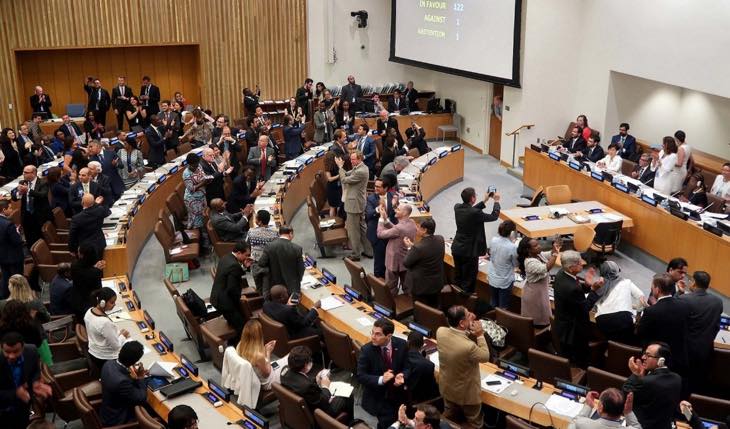
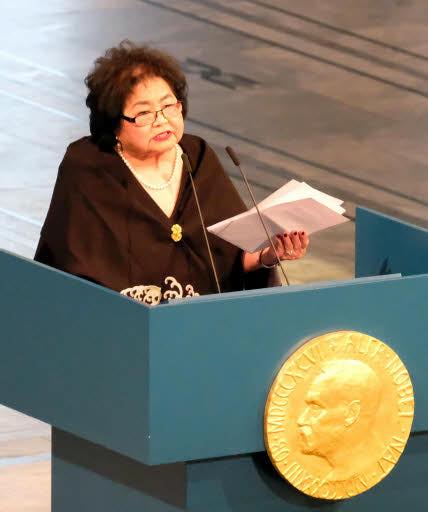
On July 7, 2017, the Treaty on the Prohibition of Nuclear Weapons was adopted, with the support of 122 member states, at the United Nations headquarters in New York. The preamble of the treaty refers to “the unacceptable suffering of and harm caused to the victims of the use of nuclear weapons (hibakusha).”
It outlaws obtaining or transferring nuclear weapons as well as aiding others in developing these weapons. It is also illegal to “threaten to use nuclear weapons.” If human beings are harmed or the environment is damaged as a result of the use or development of these weapons, the party responsible is required to provide medical care and rehabilitation to those who have been affected. The nuclear-armed nations can join the treaty, too, if they agree to develop a plan to remove and destroy their nuclear arms and accept inspections.
The treaty was created by the delegates of member states who were gathered at the U.N. headquarters, but it was the A-bomb survivors and a number of nongovernmental organizations (NGOs) that persuaded the governments to act and raised awareness among the international community. One of these NGOs is the International Campaign to Abolish Nuclear Weapons (ICAN), which won the Nobel Peace Prize in 2017. Setsuko Thurlow, a survivor of the atomic bombing of Hiroshima who now lives in Canada, delivered a speech at the award ceremony.
The treaty, however, was adopted with support that came only from the non-nuclear nations; the nine countries that possess nuclear weapons remain opposed to it. These nine countries include the United States, Russia, France, the United Kingdom, China, India, Pakistan, North Korea, and Israel, which is suspected of holding nuclear arms. There are still high hurdles for the treaty to enter into force.






